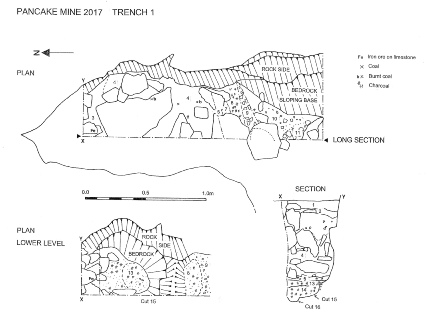






In June 2017 a team consisting of members of the EMRG and others undertook a
detailed investigation of a series of partly-mined and partly-natural short cave
and fireset galleries worked for iron ore or ochre within the Crease Limestone
(Carboniferous Limestone) at the point where where this outcropped high-up on the
side of the River Wye gorge at Great Doward, near Symonds Yat in Herefordshire.
This involved geophysical (magnetometer) survey, a surface EDM topographic survey,
underground surveying, and the excavation of three archaeological test trenches.
All of the excavation trenches found evidence for fire setting in the form of con-
evidence demonstrably in situ.
The charcoal samples (immature beechwood) have been dated to the postmedieval
period, suggesting a very late use of this technique.
During the 19th century a very different style of mining was taking place on site.
Investigation team: Phil Andrews, John Pickin, Simon Timberlake, Brenda Craddock,
John Barratt, Terry Worthington, Richard Shaw, James Johnson, Pete Johnson,
John Hine, Matt and Nicki Adlam Stiles.
Radiocarbon dating was supported by Pete Marshall and Historic England.
detailed investigation of a series of partly-
(Carboniferous Limestone) at the point where where this outcropped high-
This involved geophysical (magnetometer) survey, a surface EDM topographic survey,
underground surveying, and the excavation of three archaeological test trenches.
All of the excavation trenches found evidence for fire setting in the form of con-
evidence demonstrably in situ.
The charcoal samples (immature beechwood) have been dated to the postmedieval
period, suggesting a very late use of this technique.
During the 19th century a very different style of mining was taking place on site.
Investigation team: Phil Andrews, John Pickin, Simon Timberlake, Brenda Craddock,
John Barratt, Terry Worthington, Richard Shaw, James Johnson, Pete Johnson,
John Hine, Matt and Nicki Adlam Stiles.
Radiocarbon dating was supported by Pete Marshall and Historic England.
Great Doward Iron Mine fireset and working,
June 2017
June 2017
Great Doward Iron Mine Fireset and Working, 2,
June 2017
June 2017
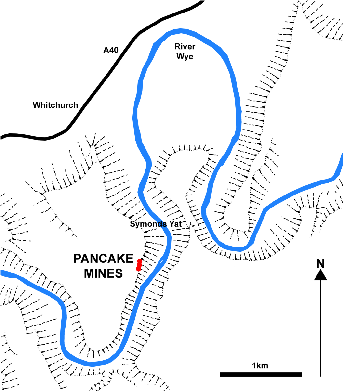
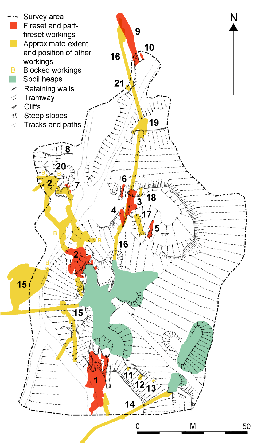
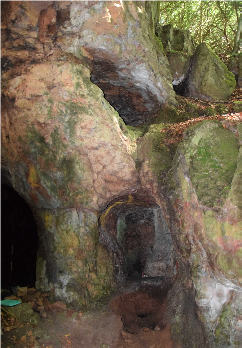
Location map for the Great Doward Mines (J. Barnatt)
June 2017 survey of the mine workings (J. Barnatt)
Photograph inside working 5 (site of Trench 3)
showing distinctive fire set profile
(photo Matt and Nicki Stiles)
showing distinctive fire set profile
(photo Matt and Nicki Stiles)
Plan and section of archaeological Trench 1 (Working 2)
(S. Timberlake and B. Craddock)
(S. Timberlake and B. Craddock)
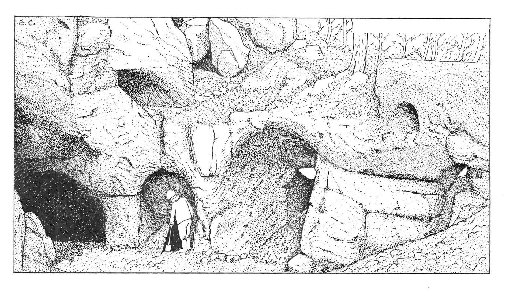
Elevation drawing of Working 2 (B. Craddock)